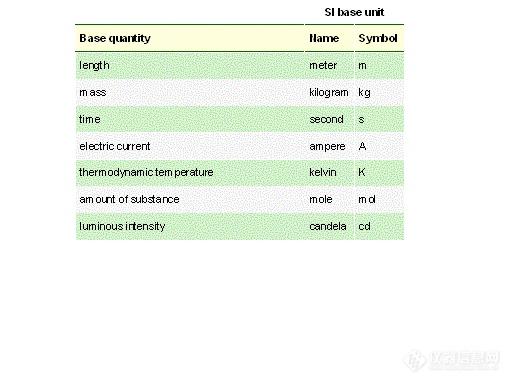


第1楼2005/03/26
Terms and Explanations
The International Vocabulary of Basic and General Terms in Metrology (VIM) defines uncertainty as:
A Certified Reference Material is a reference material, accompanied by a certificate, one or more of whose property values are certified by a procedure which establishes traceability to an accurate realization of the unit in which the property values are expressed, and for which each certified value is accompanied by an uncertainty to a stated level of confidence (VIM: 1995, ISO Guide 30).
ISO (International Organization for Standardization) is a federation of national standards bodies from more than one hundred countries whose mission is to promote activities related to standardization in order to facilitate international exchange of goods and services and to develop co-operation among its members in the areas of intellectual, scientific, technological, and economic activity (REMCO 1995). The ISO functions through its technical committees. Subcommittees and working groups to produce international agreements that are published as international 'technical' standards. For more information, read ISO Simplified.
Standards is a term surrounded by ambiguity. The word 'standard' can either be defined as a written specification (i.e. - 'technical standard') or a chemical reference material intended to define the concentrations of specified components (i.e. - 'measurement standard'). This guide uses the latter definition.
REMCO is ISO's Committee on Reference Materials. It was established in 1975 to carry out and encourage a broad international effort for harmonization and promotion of certified reference materials (CRMs) and their applications. REMCO task groups have produced a number of ISO Guides establishing definitions of reference materials and setting forth internationally agreed 'technical' standards for the production, certification, and use of reference materials. The primary ISO Guides dealing with certified reference material manufacturers are clarified in our guide, ISO Simplified.
NIST (National Institute of Standards and Technology) is "responsible for developing, maintaining, and disseminating national standards - realizations of the SI - for the basic measurement quantities, and for many derived measurement quantities. NIST is also responsible for assessing the measurement uncertainties associated with the values assigned to these measurement standards. As such, the concept of measurement traceability is central to NIST's mission." -- [source]
SRM (Standard Reference Material) is a federally registered trademark of NIST and the US Federal Government. This term describes the certified reference materials distributed specifically by NIST.
第2楼2005/03/26
Discussion
Traceability to the SI can be achieved through NIST's SRM program. NIST has developed a very comprehensive line of SRMs in a wide variety of matrices. Their organization functions as the path to achieving traceability. Laboratories can purchase SRMs from NIST in the process of method validation and calibration. In addition, chemical standards for use in calibration and method validation are produced commercially. Most, if not all, of the commercial manufacturers claim traceability.
The definition of traceability requires that a statement of uncertainty be made with each comparison in the chain. If a laboratory chooses to purchase standards from a commercial supplier rather than from NIST directly, it should be with the understanding that the stated uncertainty cannot be smaller than the uncertainty of the SRM used by the commercial manufacturer for comparison. This is due to the fact that the comparison process has a standard uncertainty that must be added onto the standard uncertainty of the NIST SRM, which is used in making the comparison.
Example: A commercial supplier certifies a 10,000 礸/mL (nominal value) solution of Cu and determines that the standard deviation of all systematic and random errors in their certification process is 25 礸/mL. In addition the NIST SRM used for comparison has a certified value of 10,000 ± 30 礸/mL Cu. NIST uses a coverage factor of 2 in reporting the uncertainty. Therefore the standard deviation of the SRM is 15 礸/mL. The reported uncertainty of the CRM produced by the commercial supplier would then be calculated taking into account the standard deviation of their production process and the standard deviation of the NIST SRM. The reported uncertainty, using a coverage factor of 2, is calculated taking the square root of the sum of the squares, i.e., ((25)2 + (15)2)1/2 x 2 = 58 礸/mL.
A chemical standard obtained from a commercial supplier that claims traceability to a specified NIST SRM should have the following information on the certificate of analysis to support a claim of traceability (the following is cited from the NIST website):
"To support a claim, the provider of a measurement result or value of a standard must document the measurement process or system used to establish the claim and provide a description of the chain of comparisons that were used to establish a connection to a particular stated reference. There are several common elements to all valid statements or claims of traceability:
A clearly defined particular quantity that has been measured.
A complete description of the measurement system or working standard used to perform the measurement.
A stated measurement result or value, with a documented uncertainty.
A complete specification of the stated reference at the time that it was compared to the measurement system or working standard.
An 'internal measurement assurance' program for establishing the status of the measurement system or working standard at all times pertinent to the claim of traceability." -- [source]
An internal measurement assurance program can be simple or complex, depending on the level of uncertainty at issue and what is necessary to demonstrate its credibility. The user of a measurement result is responsible for determining what is adequate to meet his or her own needs.
It is the responsibility of the end user of a 'measurement' standard to assess the validity of a claim of traceability. Likewise, it is the responsibility of the standard manufacturer to provide the necessary information on the Certificate of Analysis that the user assesses. This mutual interest shared by both parties establishes a greater sense of trust in the quality of the standard.